#International Council of Museums
Explore tagged Tumblr posts
Link
Museums play a crucial role in cultural exchange, enriching societies and fostering mutual under...
#originaltags#bangla wikipedia#bengali wikipedia#chattogram wikimedia community#edit-a-thon#editathon#education & open access#icom#international council of museums#international museum day#international museum day edit-a-thon#international museum day edit-a-thon 2024 on bangla wikipedia#main page (en)#museology#museum#open knowledge#partnerships & events#wikimedia bangladesh
0 notes
Text
MODO - Conoce 8 datos curiosos sobre el Museo #DíaInternacionalDeLosMuseos
Conoce los datos más curiosos del MODO y su agenda en el marco de esta celebración. Continue reading MODO – Conoce 8 datos curiosos sobre el Museo #DíaInternacionalDeLosMuseos

View On WordPress
#Artes gráficas#Día Internacional de los Museos#ICOM#International Council of Museums#MODO#museo#Museo del Objeto del Objeto#Museos por la educación y la investigación#Objetos
0 notes
Text
“Make Mine Manga” exhibition set to tour the North West
Coming soon to the North West is Make Mine Manga, a free, touring exhibition for anyone curious about manga
Coming soon to the North West is Make Mine Manga, a free, touring exhibition for anyone curious about manga, as well as the avid fan. The exhibition explores the origins of manga in Japan, the creative techniques behind the art and the wonder of Manga-Anime. The exhibition features artwork from incredible creators from Japan and UK manga creators. The exhibition has been specially created by…

View On WordPress
#Arts Council England#Atkinson Public Library#Barrow-in-Furness Central Library#Birkenhead Central Library#Bolton Library#Bolton Library Services#Bury Library#Chie Kutsuwada#downthetubes News#Exhibition News#Fumio Obata#Halton Lea Library#Huyton Library#Inko Ai Takita#Junko Mizuno#Keiko Takemiya#Kyoto International Manga Museum#Lakes International Comic Art Festival#Make Mine Manga#Manchester Central Library#Manchester City of Literature’s Festival of Libraries#Paul Gravett#St Helens Library
1 note
·
View note
Text
During the first six months of the current war on Gaza, the Israeli military destroyed about 60 percent of the Strip’s cultural heritage sites and monuments. This toll includes the Bronze Age settlement of Tell el-‘Ajjul, the St. Hilarion monastery founded nearly 1,700 years ago, and Pasha’s Palace built in the 13th century and used recently as an archaeological museum. According to many Palestinian and civil rights organizations, this destruction is deliberate. I’m an archaeologist living in the West Bank who has written about cultural heritage destruction and antiquities looting. I serve as the secretary general of the International Council on Monuments and Sites–Palestine and of the Society for Palestinian Archaeology. Over 34 years, I have conducted several research projects and interviewed hundreds of Palestinians involved in illegal looting, trading, and trafficking of ancient objects. The losses unfolding now in Palestine, however, are unprecedented in scale and speed. International agreements enshrine the protection of cultural heritage and recognize its destruction as a war crime. But agencies responsible for policing these agreements have been conspicuously and inexcusably absent from the current conflict. No doubt protecting historical monuments and archaeological sites is challenging amid a war, and humanitarian efforts should prioritize saving lives. Yet UNESCO and other heritage organizations have tools and tactics to deter the destruction of cultural assets in conflict zones. Why, then, are these organizations neglecting to protect cultural heritage in Palestine?
[...]
According to Resolution 242, passed by the United Nations Security Council in 1967, the Palestinian territories, which include the West Bank, East Jerusalem, and the Gaza Strip, are under occupation. As the occupying power, Israel must take necessary measures to safeguard and protect the cultural and natural heritage of the Palestinian territories. During its 2023–2024 assault on Gaza, Israel has been credibly accused of doing the opposite: systematically destroying Gaza’s cultural heritage as part of its broader genocide of Palestinians in Gaza. As of February, Israeli forces have destroyed at least 200 archaeological sites and buildings of cultural and historical significance in the Gaza Strip, according to a report from the Palestinian Ministry of Culture.
6 June 2024
644 notes
·
View notes
Text



CHAMPIGNAC : A NEW SIMS 3 WORLD
Champignac is a fully living Frenchy suburbia World based on Champs-les-Sims and has nothing to do with a vacation place ... Well, nothing is not really the right word ;)
Back in 2016/2017, when we began to think how we could remade Champs-les-Sims, we didn't know really what kind of world we wanted to do. We named the project : Sims de Nimes. Then, because we were on other projects ( such as sims 4 k-mods ) we left Sims de Nimes somewhere in the pipes.
We made Oaksoak Hollow ( based on Mystic Falls ), we made Eureka Valley ( a world between tech and classic life ) and we left behind the Sims 4 because, well ... too long to explain. :D
So, it was time to get out of the box our old project of Sims de Nimes ... During this time, some talented creators re-made Champs-les-Sims with their own vision, more oldy or more city life like, or more like Sunset Valley ... All those versions are interesting, but we wanted something else. And so, is born Champignac !
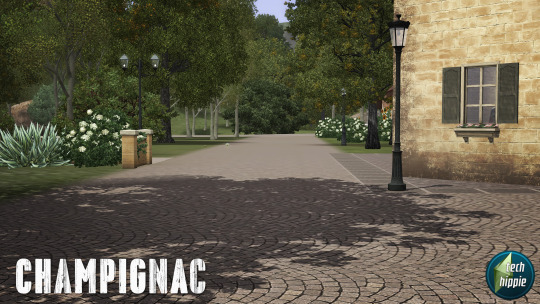
If Champignac is a true living suburbia world, it is too a quite rural world, almost a village with :
37 Community Lots
36 Residential Lots
10 Medieval Towers all around the town :)
:)
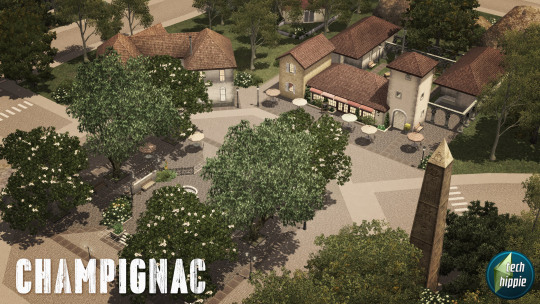
In addition, it remains few Empty Lots, differently sized to suit whatever you wish ... So, let's say Champignac is a french-not-so-little-town where life is slowly flowing and dynamic at the same time, perfect for families and Sims looking for a different lifestyle :)
A typical downtown and outskirts, full of old buildings and southern architecture, a joyful mix between south-east and south-west housing, with a touch of something more northener ( but don't tell the citizens; it's a sure way to be frowned upon ) ... After all they worked hard to keep Champignac as it is!
People living in Champignac are quite glad of it. Sure, teenagers dream of foreign lands, but they are not too eager to leave.
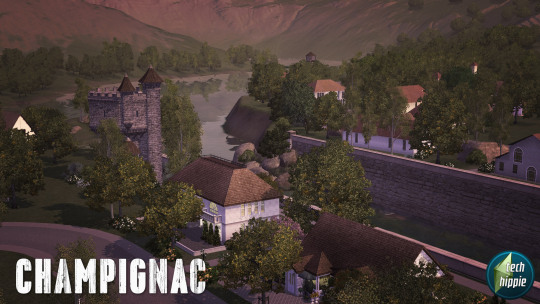
Once, the townies of Champignac were grumpy because Champs-les-Sims was so more popular than their hometown ... After all, everybody went to Champs-les-Sims, stayed there, made nectar, drove a Kenspa, flirted with locals, or … anyway! Tourists had a full experience in Champs-Les-Sims and weren't interested in visiting any other city. Champignac, the official twin city, didn't benefit from any international exchanges, and was left anonymous, far from fame and glory. As unreachable as the Eiffel Tower seen from Champignac ... until ...
In February 29th of a certain year, a distant descendant of Marquis de Landgraab lost his way on the road to Champs-les-Sims and landed in Champignac. Instantly, he fell in love with the town.
He saw an always growing vegetation, a Monastery full of secrets, the familial beach ( yes, there is a beach in Champignac ), the forgotten obelisk, the shop keepers full of stories, the well preserved houses, the green fields and the paved streets, the true Café Catane and a remaining wild fauna running here and there ... He saw perfection !
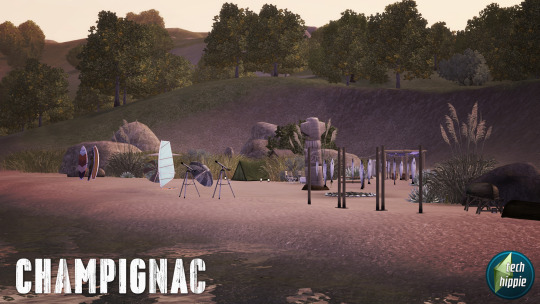

For a time, the townies of Champignac experienced fame and glory. But how exhausting it was! Tourists not really caring about the legacy of the kiosk owner, the monks overwhelmed, the museum director who couldn't find enough teenagers to help ... Even the fishes were exhausted! Hard times indeed ... Happily, this descendant of Marquis de Landgraab met someone, somewhere, and moved out, far far away from Champignac. Celebrities said their last goodbyes and slowly, life, as it should be, was back :) The townies and City Council learned from that experience that they very much preferred not to be as famous as Champs-les-Sims ...
Life in Champignac was relatively calm again when suddenly, a global health crisis emerged and the Simvid-18 pandemic hit many many people ... Anxiety swept through the villages and the small towns, including Champignac of course ... With an aging population, residents became increasingly concerned about the well-being of their neighbors and the future of the city.

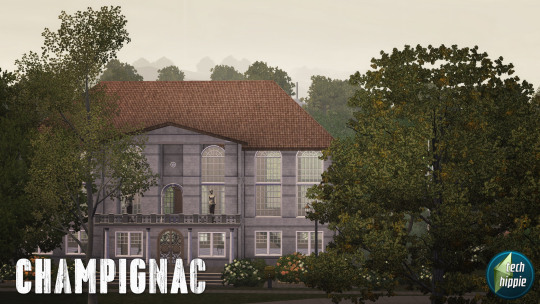

Shop owners and farmers who were already considering retirement were now faced with the daunting task of deciding whether to continue their businesses in such uncertain times. The entire world seemed to come to a halt, leaving everyone in Champignac wondering who would carry the torch and ensure the future.
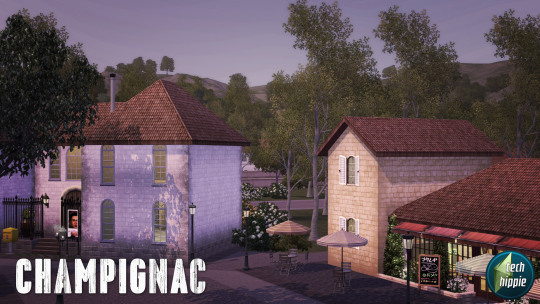
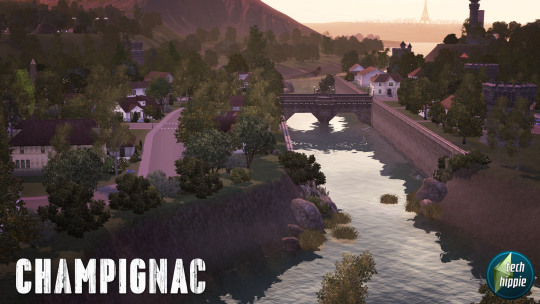
Surprisingly, the youngsters that only came sporadically for holidays, moved back to Champignac. Fearful of living in a crowded city and eager to gather with family members, they came to the old town with friends. After all, there were spare bedrooms in most houses!

When the restrictions were lifted, many were reluctant to leave. Going back to a stressful life and fast-paced city wasn't enticing anymore. Most decided to turn their lives around. They took up the florist shop or asked for a job transfer ... So, life emerged again :) Champignac is now a thriving town where you have everything you wish for and nothing more.
Champignac is blessed with old churches turned into bars or wineries, old palazzi that are inspiring, and small boutiques as gathering places ...

Winters and autumns are short, while spring and summer are long. Come and live among thousands of old buildings, walk on streets Roman soldiers once trod upon, see treasures from foreign campaigns, and benefit from the perfect blend of country living and town living.


Remember ... With its unique blend of history, culture, and natural beauty, Champignac offers the Sims a captivating and enriching experience. From the stunning architecture to the delectable cuisine, every aspect of this town reflects the South of France’s intoxicating charm.
Are you ready to move in Champignac ?
blackgryffin \o/
IMPORTANT : We advice STRONGLY to begin with the half-populated SavaGame provided in addition to the World itself ...
DO NOT FORGET to download the CC of Champignac we provide on our website too ! for more information, see the 2 posts below ;)
Have fun !
DOWNLOAD HERE
#sims 3#sims 3 custom content#sims 3 worlds#sims 3 world#sims 3 cc#k hippie#sims 3 build#champignac#champs les sims#sims de nimes#k-hippie worlds#k hippie worlds
1K notes
·
View notes
Text
Oh, hello
The Sibyl of Tydavnet was supposedly back home, and we finally have something to speculate upon, after a week-end with no news from both of Them (go figure). So much so that it's been very, very quiet in here:
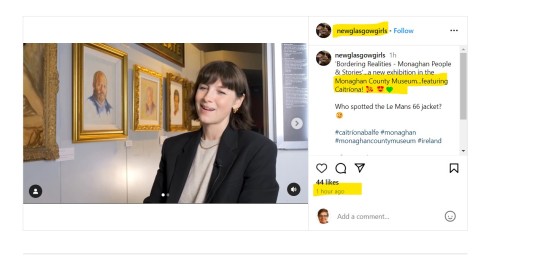
This is, of course, a latergram, When being the important question, here. I have to say I was a bit surprised, after two hours of research (and cooking, but that is a separate story).
Let's unpack:
From 1974 to 2023, the Monaghan County Museum has been open and free to visit. Until 1981, in the old Courthouse building of Monaghan Town, then temporarily hosted by the Christian Brothers Secondary School, and since 1986 in this building on Hill Street:

I am not inventing anything, this info comes straight from their official website:
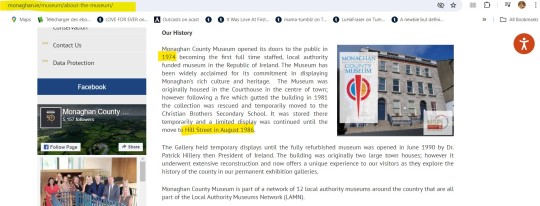
On May 18th, 2023 (on International Museum Day), the venue was closed and the collections were planned to be moved at the new Monaghan Peace Campus:
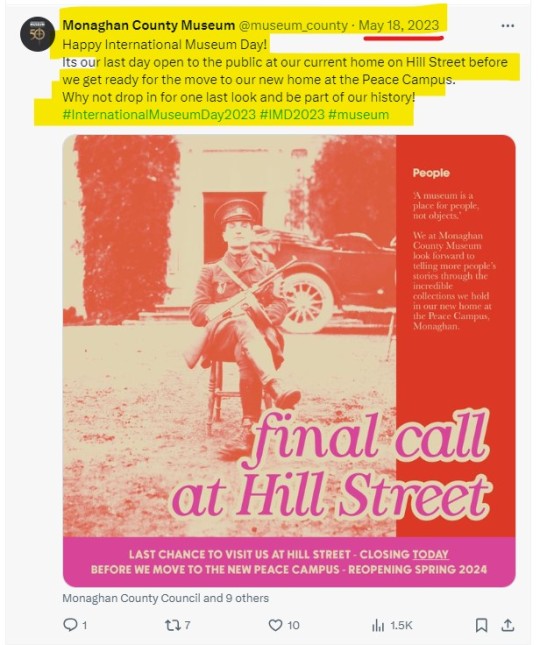
The Peace Campus is a very important local initiative, funded by the City Council, the Irish Department of Rural and Community Development and the EU, via the Irish SEUPB (Special EU Programs Body - ironically, the counterpart of my new job, starting next Friday, LOL). It was inaugurated on May 10, 2024:

Where was C, in this clip, posted today and suggesting a recent trip to Ireland?

In the old building, of course, exactly as it was on May 18, 2023:
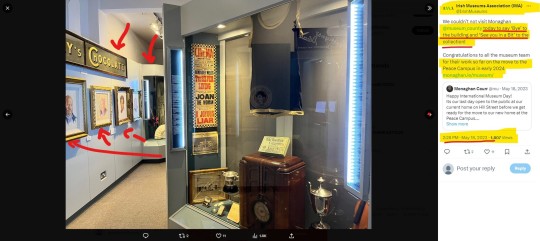
Apparently taken on an extensive private tour that included the storage area, where this pic was taken:

How do I know it? I simply combed the meager social media accounts of the Museum, that's all. See and compare for yourself, with this screenshot of the moving operations, from the old Hill Street to the new premises (posted on Facebook, on June 14th, 2024, but very likely shot slightly before):

In April 2023, the new Peace Campus looked roughly like this. There is no way that clip would have been shot there. Not then...
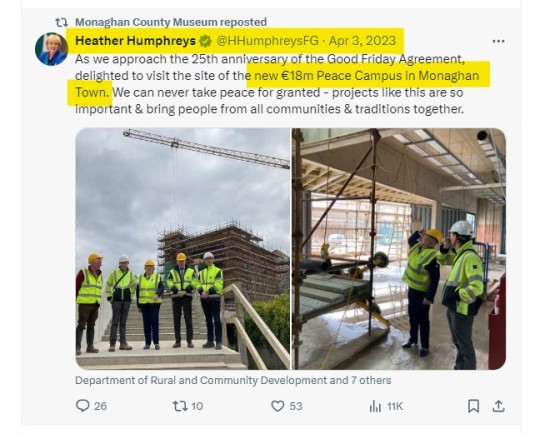
...and not later, because the new display in the new venue looks totally different:
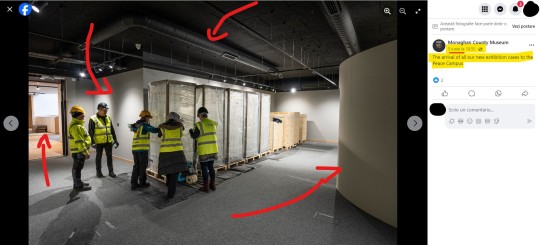
And it was completed around May 10th 2024, when this picture was taken, separately from the rest of the released info:

The pic was taken by Laura Hogan, the North East Correspondent for RTE News, a subsidiary of the Irish public TV and Radio broadcasting company:

But perhaps even more interestingly, the Museum shot several clips of people featured, like C, in the new inaugural exhibition. Such as this guy, back in June 2023, on their old premises:
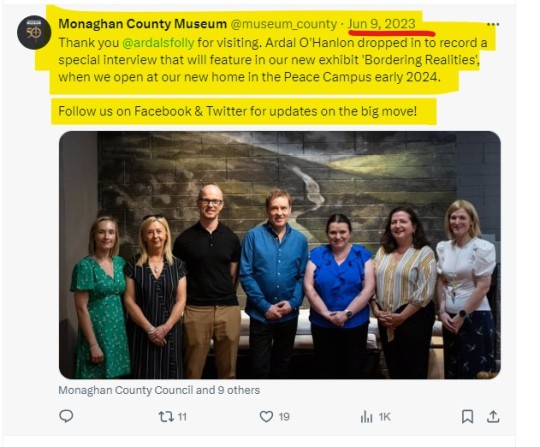
Ardal O'Hanlon, Irish stand-up comedian and actor, based in Ireland and London:

This is a very, very, VERY late latergram. My best guess would be anytime between May 2023 and most probably around June 2023. Simply because it would be logical that the clip shooting be completed with all the people involved at the same time, for logistical reasons, and before the packing of the exhibits would have started in earnest.
As always, I could be wrong. As always, people will bitch around, especially the divas and those who know strictly nothing. But I'll be damned if C were in Ireland anytime near this last week-end!
94 notes
·
View notes
Text

Véra Cardot and Pierre Joly
A visitor in a moment of contemplation is captured at the Mark Rothko exhibit, Musée d'Art Moderne de la Ville de Paris, Paris, France, 1962-1963
The original exhibit was organized and originally shown at The Museum of Modern Art, New York, 1961 Gelatin silver print International Council and International Program Records, The Museum of Modern Art Archives, New York artwork © 1998 Kate Rothko Prizel & Christopher Rothko / Artists Rights Society (ARS), New York
#mark rothko#markrothko#rothko#daily rothko#dailyrothko#abstract expressionism#modern art#abstraction#colorfield#ab ex#colorfield painting#mid century#Véra Cardot and Pierre Joly#exhibition
133 notes
·
View notes
Text









The Princess Royal’s Official Engagements in June 2024
04/06 As Master of the Corporation of Trinity House, attended the Trinitytide Anniversary Annual Court Meeting, Church Service and Luncheon. 💼⛪️🍽️
As Colonel-in-Chief, The Royal Corps of Signals, this afternoon inspected The Queen’s Gurkha Signals Regiment on public duties at St James’s Palace. 🫡
As Chairman of the International Olympic Committee Members Election Commission, held a Members Election Commission Meeting at St James’s Palace. 💼
05/06 With Sir Tim As Colonel-In-Chief of The Royal Regina Rifles, unveiled a statue and attended a Reception at 10 Place des Canadiens, Thue et Mue, Bretteville. 🇬🇧🇫🇷🇨🇦
With Sir Tim Attended a service of commemoration and reception to mark the 80th anniversary of the D-Day Landings at Bayeux War Cemetery. 🪦🪖
With Sir Tim As President of the Commonwealth War Graves Commission, attended the Annual Service in Bayeux Cathedral to commemorate the 80th anniversary of the D-Day Landings. ⛪️
With Sir Tim As President of the Commonwealth War Graves Commission, attended a service to commemorate the 80th Anniversary of the D-Day Landings at Bayeux War Cemetery. 🪦🕯️
06/06 With Sir Tim Attended the Annual Founder’s Day Parade at the Royal Hospital Chelsea. 💂
As Colonel of The Blues and Royals (Royal Horse Guards and 1st Dragoons), attended a Household Cavalry Council Meeting at Hyde Park Barracks. 🐎
07/06 Opened Forest of Dean Community Hospital. 🏥
Visited Ruskin Mill Trust in Nailsworth. 🏫
09/06 Attended the Bramham International Horse Trials Prize Giving, on its 50th anniversary. 🏇🏼
11/06 Opened Mercator Media Limited’s 25th Anniversary Seawork Marine Exhibition in Southampton. ⛴️
As Patron of the British Nutrition Foundation, visited the British Armed Forces Nutrition Programme at The Royal Logistic Corps Regimental Museum in Winchester. 🍏🍊
As Patron of Farms for City Children, and Past Master of the Worshipful Company of Butchers, attended a Festival of Learning at Butchers’ Hall. 🥩🥓🍖
Unofficial Sir Tim attended a reception at the King Edward VII Hospital and unveiled a plaque dedicated to Sir Jameson Boyd Adams. 🍾
With Sir Tim As Royal Fellow of the Royal Academy of Engineering, attended The Prince Philip Fund Commemoration Dinner at Prince Philip House. 🍽️🍾
12/06 On behalf of The King, held an Investiture at Windsor Castle. 🎖️
As Chancellor of the University of London, attended the School of Advanced Study 30th Anniversary Reception at Senate House. 📚📖
As President of The Duke of Edinburgh’s Commonwealth Study Conferences, attended a Dinner. 🍽️🗺️
13/06 As Patron of Transaid, visited the Multimodal 2024 Exhibition. 🛻
As Patron of the Townswomen’s Guilds, attended the Annual General Meeting. 💼
As Patron of the Foundation for Future London, attended the UK Cultural Exchange launch. 🇬🇧🗺️
With Sir Tim As President of the Royal Society for the encouragement of Arts, Manufactures and Commerce, attended a President’s Panel Discussion and Dinner. 🎤🍽️
14/06 Presided over a conference attended by the Colonels of the Regiments of the Household Division. 💂
Cavalry Regiments
Blues and Royals - Princess Anne
The Life Guards - Non - Royal
Footguards
Grenadier Guards - Queen Camilla
Coldstream Guards - Non - Royal
Scots Guards - Prince Edward
Irish Guards - Catherine, Princess of Wales
Welsh Guards - Prince William
Reserves
London Guards - Prince Edward
15/06 With Sir Tim Trooping the Colour
17/06 With Sir Tim Attended a chapter of the Most Noble Order of the Garter in the Throne Room, Windsor Castle. 🏰
With Sir Tim Attended a luncheon, hosted by the King, at Windsor Castle. 🍽️
With Sir Tim Attended an Installation Service was held in St George’s Chapel at which The Duchess of Gloucester was installed as a Lady of the Most Noble Order of the Garter. 🪽🎖️
18/06 unofficial Attended day one of Royal Ascot. 🏇🏼
19/06 unofficial Attended day two of Royal Ascot. 🏇🏼
20/06 unofficial With Sir Tim Attended day three (Ladies Day) of Royal Ascot. 🏇🏼
21/06 With Sir Tim Attended the RNLI Beating Retreat, Reception and Dinner at the Old Royal Naval College in Greenwich. 🛟🥂🍽️
22/06 With Sir Tim As Patron of the Eric Liddell 100, attended a Service in St Giles’ Cathedral, followed by a Reception to commemorate 100 years since Eric Liddells Olympic gold medal win. 🥇
~ Engagements cancelled due to hospitalisation ~
Total official engagements for Anne in June:
2024 total so far:
Total official engagements accompanied by Tim in June:
2024 total so far:
FYI - due to certain royal family members being off ill/in recovery I won't be posting everyone's engagement counts out of respect, I am continuing to count them and release the totals at the end of the year.
#to say she hasn’t done any engagements for the last week in june she hasn’t done too bad this month 🥹#get well soon anne!!!#it will be so lovely to see you back again 🥰#princess anne#princess royal#june 2024#aimees unofficial engagement count 2024
32 notes
·
View notes
Text
















McQueen The Fashion Icons Unofficial and unauthorised
Michael O'Neill
Sona Books, Knowle, Solihull, West Midlands 2023, 144 pages, 21,5x27,5, ISBN 978-1-915343-32-1
euro 35,00
email if you want to buy [email protected]
“Alexander McQueen - Redefining Beauty” is magnificently adorned with some of Lee Alexander McQueen’s most riveting designs, and the narrative illuminates the personal and professional struggles of a man who dared to defy accepted norms in the cavernous halls of fashion and give the world a new sense of the grandeur of which human creativity is capable. From conflicted gay teenager, aggressive and remote young man, through to his lonely suicide, the book charts Alexander McQueen’s ascent to couturier par excellence, highlighting his spectacular shows and showing how his confrontational, streetwise manner was simply a shield that protected and masked a very shy, sensitive and insecure man who hailed from the wrong side of the high fashion tracks. “Alexander McQueen - Redefining Beauty” will imprint upon the reader never to be forgotten images of his explosive designs, illuminate his talent and delve into the mind of a man who was Britain’s most unpredictable, tormented and spectacular fashion designer.
Awarded British Fashion Designer of the Year 1996, 1997, 2001 & 2003. Awarded CBE, Council of Fashion Designers of America - International Designer of the Year 2003, Chief Designer of Givenchy,Creative Director of Gucci. Gucci Group acquired the McQueen fashion label, Designed wardrobe for David Bowie tours and Bjork and Bowie Albums, Patrons included Nicole Kidman, Penelope Cruz, Rihanna & Lady Gaga, McQueen stores in London, Paris, Milan, New York & Las Vegas. Hugely successful exhibition at Museum of Metropolitan of Art New York – Savage Beauty in 2011 V & A Exhibition runs in London - March until August 15th 2015
01/12/24
14 notes
·
View notes
Text

[Eleanor Roosevelt with the Universal Declaration of Human Rights, courtesy of the FDR Presidential Library & Museum, via Wikipedia Commons]
* * * *
LETTERS FROM AN AMERICAN
December 10, 2024
Heather Cox Richardson
Dec 10, 2024
Today is Human Rights Day, celebrated internationally in honor of the day seventy-six years ago, December 10, 1948, when the United Nations General Assembly announced the Universal Declaration of Human Rights (UDHR).
In 1948 the world was still reeling from the death and destruction of World War II, including the horrors of the Holocaust. The Soviet Union was blockading Berlin, Italy and France were convulsed with communist-backed labor agitation, Greece was in the middle of a civil war, Arabs opposed the new state of Israel, communists and nationalists battled in China, and segregationists in the U.S. were forming their own political party to stop the government from protecting civil rights for Black Americans. In the midst of these dangerous trends, the member countries of the United Nations came together to adopt a landmark document: a common standard of fundamental rights for all human beings.
The United Nations itself was only three years old. Representatives of the 47 countries that made up the Allies in World War II, along with the Byelorussian Soviet Socialist Republic, the Ukrainian Soviet Socialist Republic, and newly liberated Denmark and Argentina, had formed the United Nations as a key part of an international order based on rules on which nations agreed, rather than the idea that might makes right, which had twice in just over twenty years brought wars that involved the globe.
Part of the mission of the U.N. was “to reaffirm faith in fundamental human rights, in the dignity and worth of the human person, in the equal rights of men and women and of nations large and small.” In early 1946 the United Nations Economic and Social Council organized a nine-person commission on human rights to construct the mission of a permanent Human Rights Commission. Unlike other U.N. commissions, though, the selection of its members would be based not on their national affiliations but on their personal merit.
President Harry S. Truman had appointed Eleanor Roosevelt, widow of former president Franklin Delano Roosevelt and much beloved defender of human rights in the United States, as a delegate to the United Nations. In turn, U.N. Secretary-General Trygve Lie from Norway put her on the commission to develop a plan for the formal human rights commission. That first commission asked Roosevelt to take the chair.
“[T]he free peoples” and “all of the people liberated from slavery, put in you their confidence and their hope, so that everywhere the authority of these rights, respect of which is the essential condition of the dignity of the person, be respected,” a U.N. official told the commission at its first meeting on April 29, 1946.
The U.N. official noted that the commission must figure out how to define the violation of human rights not only internationally but also within a nation, and must suggest how to protect “the rights of man all over the world.” If a procedure for identifying and addressing violations “had existed a few years ago,” he said, “the human community would have been able to stop those who started the war at the moment when they were still weak and the world catastrophe would have been avoided.”
Drafted over the next two years, the final document began with a preamble explaining that a UDHR was necessary because “recognition of the inherent dignity and of the equal and inalienable rights of all members of the human family is the foundation of freedom, justice and peace in the world,” and because “disregard and contempt for human rights have resulted in barbarous acts which have outraged the conscience of mankind.” Because “the advent of a world in which human beings shall enjoy freedom of speech and belief and freedom from fear and want has been proclaimed as the highest aspiration of the common people,” the preamble said, “human rights should be protected by the rule of law.”
The thirty articles that followed established that “[a]ll human beings are born free and equal in dignity and rights…without distinction of any kind, such as race, colour, sex, language, religion, political or other opinion, national or social origin, property, birth or other status” and regardless “of the political, jurisdictional or international status of the country or territory to which a person belongs.”
Those rights included freedom from slavery, torture, degrading punishment, arbitrary arrest, exile, and “arbitrary interference with…privacy, family, home or correspondence, [and] attacks upon…honour and reputation.”
They included the right to equality before the law and to a fair trial, the right to travel both within a country and outside of it, the right to marry and to establish a family, and the right to own property.
They included the “right to freedom of thought, conscience and religion,” “freedom of opinion and expression,” peaceful assembly, the right to participate in government either “directly or through freely chosen representatives,” the right of equal access to public service. After all, the UDHR noted, the authority of government rests on the will of the people, “expressed in periodic and genuine elections which shall be by universal and equal suffrage.”
They included the right to choose how and where to work, the right to equal pay for equal work, the right to unionize, and the right to fair pay that ensures “an existence worthy of human dignity.”
They included “the right to a standard of living adequate for…health and well-being…, including food, clothing, housing and medical care and necessary social services, and the right to security in the event of unemployment, sickness, disability, widowhood, old age or other lack of livelihood in circumstances beyond [one’s] control.”
They included the right to free education that develops students fully and strengthens “respect for human rights and fundamental freedoms.” Education “shall promote understanding, tolerance and friendship among all nations, racial or religious groups, and shall further the activities of the United Nations for the maintenance of peace.”
They included the right to participate in art and science.
They included the right to live in the sort of society in which the rights and freedoms outlined in the UDHR could be realized. And, the document concluded, “Nothing in this Declaration may be interpreted as implying for any State, group or person any right to engage in any activity or to perform any act aimed at the destruction of any of the rights and freedoms set forth herein.”
Although eight countries abstained from the UDHR—South Africa, Saudi Arabia, and six countries from the Soviet bloc—no country voted against it, making the vote unanimous. The declaration was not a treaty and was not legally binding; it was a declaration of principles.
Since then, though, the UDHR has become the foundation of international human rights law. More than eighty international treaties and declarations, along with regional human rights conventions, domestic human rights bills, and constitutional provisions, make up a legally binding system to protect human rights. All of the members of the United Nations have ratified at least one of the major international human rights treaties, and four out of five have ratified four or more.
Indeed, today is the fortieth anniversary of the U.N.’s adoption of the Convention Against Torture and Other Cruel, Inhuman or Degrading Treatment or Punishment, more commonly known as the United Nations Convention Against Torture (UNCAT), which follows the structure of the UDHR.
The UDHR remains aspirational, but it is a vital part of the rules-based order that restrains leaders from human rights abuses, giving victims a language and a set of principles to condemn mistreatment. Before 1948 that language and those principles were unimaginable.
In a proclamation today, the White House recommitted to “upholding the equal and inalienable rights of all people.” It noted that in the U.S., the Biden administration established “the White House Gender Policy Council to advance the rights and opportunities of women and girls across domestic and foreign policy [and] rejoined the United Nations Human Rights Council to highlight and address pressing human rights concerns.” It has “worked to protect the rights of LGBTQI+ people” and to expand “accessibility for people with disabilities.” Crucially, the administration has also worked to stop the misuse of commercial spyware, which has enabled human rights abuses around the world as authoritarian governments surveil their populations, and to fight back against transnational repression targeting human rights defenders.
At the State Department, Under Secretary of State Uzra Zeya, Assistant Secretary of State Dafna Rand, and Secretary of State Antony Blinken honored eight individuals with the Human Rights Defender Award. The recipients came from Kuwait, Bolivia, the Kyrgyz Republic, Burma, Eswatini, Ghana, Colombia, and Azerbaijan and defend migrant workers, LGBTQ+ individuals, women, democracy.
Their stories underlined both that the fight for human rights is universal and that it requires courage. One recipient’s award was delivered in absentia because he is imprisoned. Another award was posthumous—the recipient was murdered last year.
LETTERS FROM AN AMERICAN
HEATHER COX RICHARDSON
#Human rights#Letters from An American#heather cox richardson#state department#women#UDHR#history#American History#FDR
11 notes
·
View notes
Text
February 4, 2025
POTUS:
Sign an executive order to place more sanctions, restrictions, and punishment on Iran. Read more here
Published two fact sheets. One on the topic of the previous point. The other on the President withdrawing America from the "Anti-American" UN organizations including UN Human Rights Council and stopping funding to the UN Relief and Works Agency for the Near East
The executive order that officially pulls the from the above UN organizations and reevaluates all other UN organizations the USA is a part of. Read fully here
Made statements suggesting a US takeover of Gaza, which would be against international law
More information here
SCOTUS:
No cases were heard, and no decisions were published
More information here
Congress:
31 bills and resolutions were introduced in the Senate, many dealing with the environment and economy. Read all here
Two resolutions were passed in the Senate. One recognizing January 2025 as National Mentoring Month and the other congratulating the University of Vermont men's soccer team on winning the 2024 National Collegiate Athletic Association Division I men's soccer national championship
The Senate confirmed the nomination of Douglas Collins to be Secretary of Veterans Affairs and Pamela Bondi to be Attorney General
88 bills and resolutions were introduced in the House of Representatives. Full list here
Five bills were passed in the House. Three involve indigenous people's land. The others deal with natural resources and a grant for the National September 11 Memorial & Museum. Read fully here
More information here
#congress#politics#potus#president trump#scotus#supreme court#us politics#us president#us supreme court#house of representatives#senate#american politics
8 notes
·
View notes
Link
Museums play a crucial role in cultural exchange, enriching societies and fostering mutual under...
#originaltags#bangla wikipedia#bengali wikipedia#chattogram wikimedia community#edit-a-thon#editathon#education & open access#icom#international council of museums#international museum day#international museum day edit-a-thon#international museum day edit-a-thon 2024 on bangla wikipedia#main page (en)#museology#museum#open knowledge#partnerships & events#wikimedia bangladesh
0 notes
Text

"RESOLUTION OF THE INTERNATIONAL AUSCHWITZ COUNCIL ON THE TRAGIC EVENTS IN ISRAEL, APPROVED BY CIRCULATION ON 18 NOVEMBER 2023
The International Auschwitz Council by the Prime Minister of the Republic of Poland acknowledges with the deepest pain and sorrow the suffering of innocent Victims – tortured, raped, taken hostage, and murdered by Hamas terrorists.
We wish to express our unwavering solidarity with Israelis and Jews worldwide.
Threatened in its existence, the State of Israel has the right to self-defense in accordance with international law and the principles of humanitarianism. The existence of a free, sovereign, and democratic Jewish State is one of the pillars of world peace.
The unimaginable hatred and violence perpetrated by terrorists only results in extensive and more widespread suffering – affecting also the civilian population of Gaza, whom Hamas exploits as human shields.
An essential first step to halt the horrifying spiral of death and war is the immediate and unconditional release of all hostages, a demand we make with all our might."
---------
Auschwitz coming out as pro-genocide is more than I can take. The world is upside down. It's also blocking accounts of Jewish people, even holocaust survivors and their families, who criticize its stance. People on twitter are reminding us that the museum is run by a right wing Polish group who deny any participation of Poland in the holocaust and refuse to allow research into it.
From the river to the sea, Palestine will be free.
76 notes
·
View notes
Text
The High Representative in Bosnia and Herzegovina, Christian Schmidt, on Thursday issued an order to support key cultural national institutions, including the National and University Library in Sarajevo, amid severe financial difficulties. The decision follows decades of unmet obligations by local authorities, pushing these institutions to the brink of collapse.
Using his so-called “Bonn powers”, Schmidt – the international official responsible for overseeing the implementation of the peace deal that ended the Bosnian war – delivered his order in front of the library, which closed last month due to its financial problems.
Schmidt said that his decision aims to protect all major state-level cultural institutions “if they ever come into the same situation”.
“I would like to call on everyone to contribute in this context. Bosnia and Herzegovina, as the founder of these institutions, is obliged to exercise its responsibilities, including appointments to positions and funding,” he said.
He emphasised the plight of seven national cultural institutions: the Bosnian Cinematheque, the National Museum, the Historical Museum, the Museum of Literature and Performing Arts, the Library for the Blind and Visually Impaired, the Art Gallery, and the National and University Library.
Schmidt pointed out that library workers have been working without pay since March and library phone lines have been cut off due to unpaid bills.
This year, the assembly of Sarajevo Canton, one of ten cantons in Bosnia’s Federation entity, passed a Law on Temporary Co-financing for key cultural institutions, promising partial support.
But the Ministry of Science, Higher Education and Youth allocated only 220,000 Bosnian marks, or some 122,000 euros, for 2024, the same as the year before but nearly 200,000 marks less than in 2022. This only covers two months of salaries.
The Federation entity’s Ministry of Education and Science has not issued a public call for co-financing, and the funds it has provided are insufficient and temporary. Similarly, the Federation Ministry of Culture and Sports has not issued a public call to support cultural institutions sufficiently.
Bosnia’s old City Hall is one of the most iconic buildings in the country. Opened in 1896 under Austro-Hungarian rule, Archduke Franz Ferdinand was assassinated shortly after leaving it in 1914, triggering World War I.
It became the national library in 1949. Bosnian Serb forces besieging Sarajevo shelled it in 1992 and almost destroyed it, while thousands of ancient manuscripts perished in a fire. Since then, the National Library has not been able to return to the City Hall.
“This institution survived an attack on August 25, 1992, when the Vijecnica [City Hall] was shelled. We must protect this symbol of tradition and this symbol of a shared future,” Schmidt remarked, underscoring the historical significance of the library.
The library, along with the other cultural institutions mentioned by Schmidt, has been unable to function properly due to unpaid bills.
Since it has been closed, the library has also been unable to issue the ISBN numbers that identify books, which Schmidt described as a “direct attack” on cultural development in the country.
Because a book needs an ISBN number and the library is the sole provider in the Federation entity, no books have been published in the entity since it closed in October. A different institution issues ISBN numbers in the Republika Srpska entity.
Schmidt’s new order will secure the payment of overdue electricity and phone bills, ensuring the institutions can continue to operate. He has given Bosnia’s Council of Ministers a 60-day deadline to propose a law that will regulate the future functioning of these institutions.
“This is an opportunity to restore not only the possibility of issuing ISBN numbers but to ensure the functioning of the library,” Schmidt added.
8 notes
·
View notes
Text
The United States government is doubling down on its commitment to safeguarding Ukrainian culture amid the Eastern European country’s ongoing war with Russia.
On September 19, U.S. officials announced a new $1 million grant to the International Center for the Study of the Preservation and Restoration of Cultural Property (ICCROM), which will use the funds to “support the next phase of a multiyear project to help Ukraine improve risk reduction and emergency management of its cultural heritage,” according to a statement. The grant is part of the U.S.’s $10.5 million commitment to Ukraine under the Ukraine Cultural Heritage Response Initiative, which was established in 2023 by the U.S. Department of State.
“Ukraine is fighting the Russian invasion on all fronts,” says Maksym Kovalenko, the Ukrainian consul general in Naples, Italy, in the statement. “The cultural front is no exception. The support of the international community provides us with an ability to respond to the challenges of war and, despite everything, to develop a long-term strategy for the preservation and restoration of our cultural heritage.”
Since Russia invaded Ukraine in February 2022, UNESCO has verified damage to 438 Ukrainian cultural sites, including religious sites, buildings of historical or artistic interest, museums, monuments, libraries, and an archive. The agency previously said it was “gravely concerned” over threats to Ukrainian heritage.
Russian troops have removed “entire truckloads of artworks and historical artifacts” from Ukrainian museums, supposedly for “safekeeping,” reports Vitaly Shevchenko for BBC News. In some museums in Russian-occupied Ukraine, Russian troops have removed exhibitions and replaced them with propaganda glorifying the war.
In a 2023 essay for Smithsonian magazine, Smithsonian Distinguished Scholar and Ambassador-at-Large Richard Kurin wrote, “These attacks are not just random, nor do they represent collateral damage. Rather, they suggest a targeted attack on Ukrainian history, culture and identity, a means toward [Russian President Vladimir] Putin’s ends—the destruction is a deliberate attempt to obliterate Ukrainian history and culture.”
Hundreds of professionals associated with Ukrainian and international organizations—among them the Smithsonian Cultural Rescue Initiative—have been fighting the threat to Ukrainian heritage for the past two years. In some cases, cultural heritage workers have been able to smuggle important works of art out of Ukraine and display them elsewhere. Last year, for example, five precious artworks rescued from Kyiv’s Khanenko Museum went on view at the Louvre in Paris.
The $1 million grant—the second-largest awarded under the Ukraine Cultural Heritage Response Initiative to date—arrives on the heels of newly imposed emergency import restrictions aimed at fighting the illegal removal and sale of Ukrainian cultural artifacts. Those restrictions, which limit the types of Ukrainian cultural property that can enter the U.S., will be in place until 2029.
In addition to offering funds for cultural rescue initiatives, the U.S. announced more than $8 billion in military assistance to Ukraine on September 26, the day that Ukrainian President Volodymyr Zelenskyy visited the White House. In total, Congress has appropriated $175 billion in aid to Ukraine, per the Council on Foreign Relations.
“Ukrainians are fighting for the human rights and freedoms we all cherish,” says Lee Satterfield, the U.S.’s acting under secretary for public diplomacy and public affairs, in the statement. “And they are also fighting, in a very real sense, for their identity as a distinct and unique culture, which Vladimir Putin has denied—a denial he has used to falsely justify his brutal, full-scale invasion. [The $1 million] funding will support the heroic efforts of Ukrainians to protect and preserve their cultural heritage.”
#current events#politics#ukrainian politics#russian politics#art#art history#museums#russo-ukrainian war#2022 russian invasion of ukraine#ukraine#russia#usa#smithsonian institution#khanenko museum#louvre#vitaly shevchenko#richard kurin#volodomyr zelenskyy#lee satterfield#vladimir putin#iccrom#unesco
8 notes
·
View notes
Text
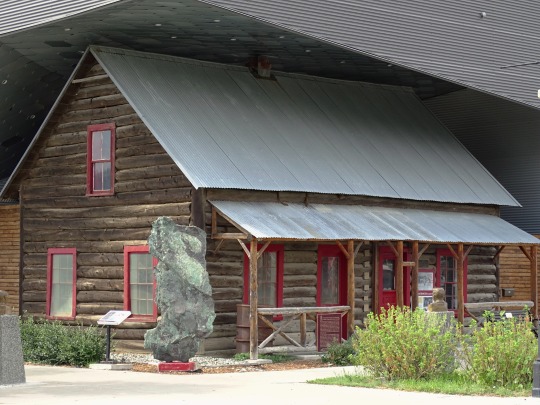
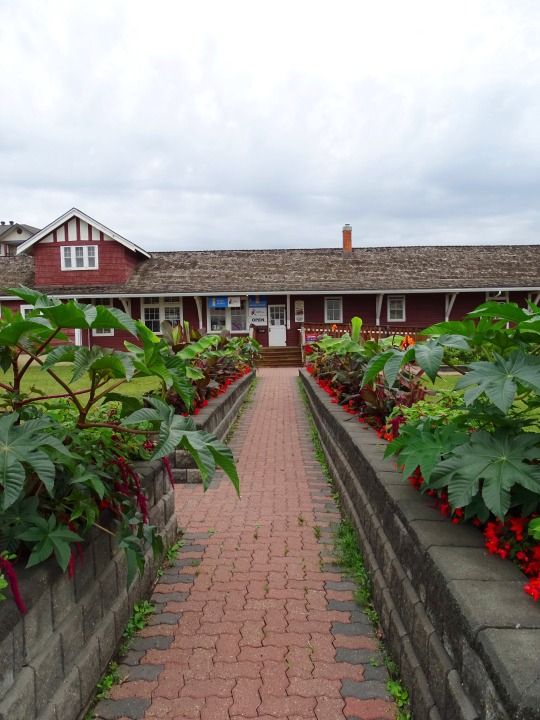

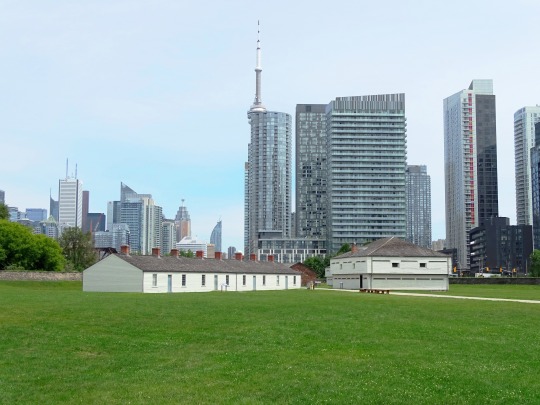

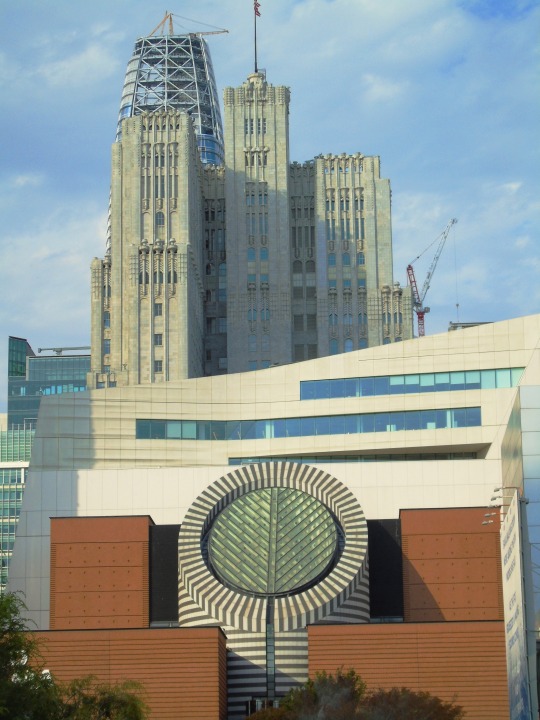
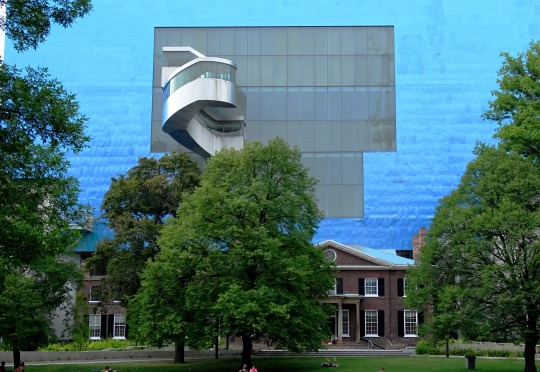


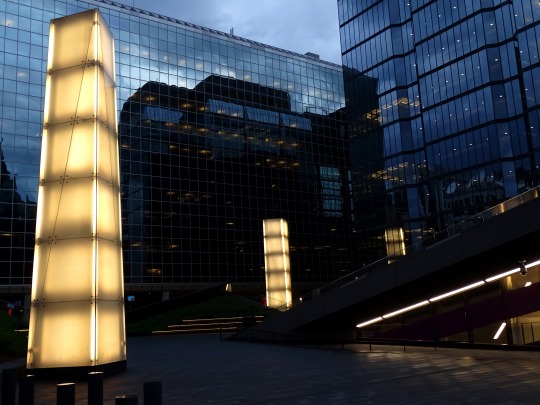
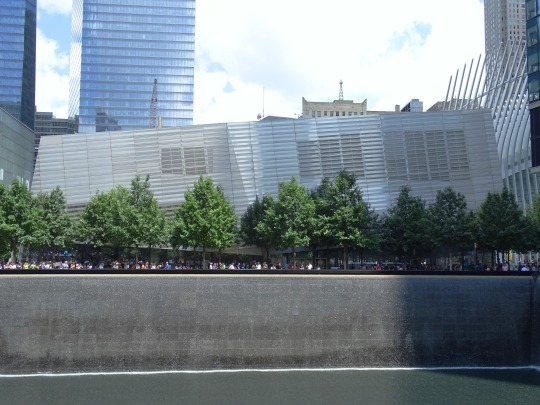

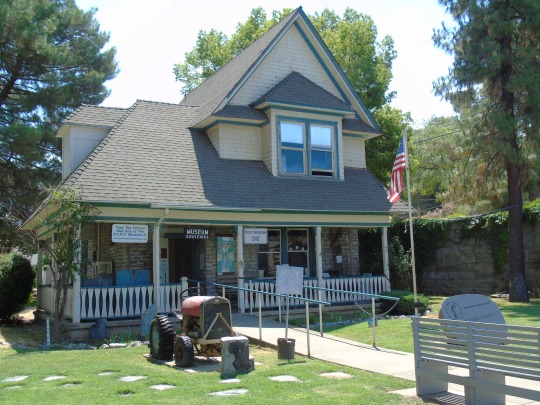

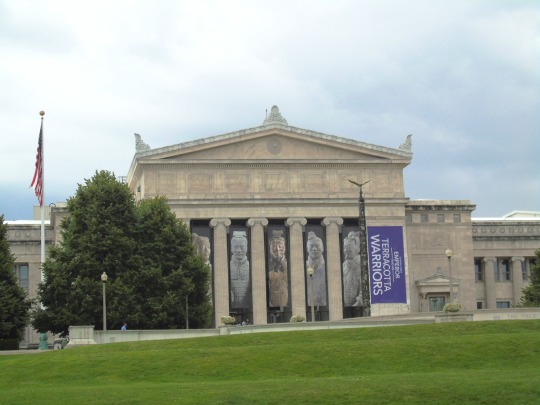
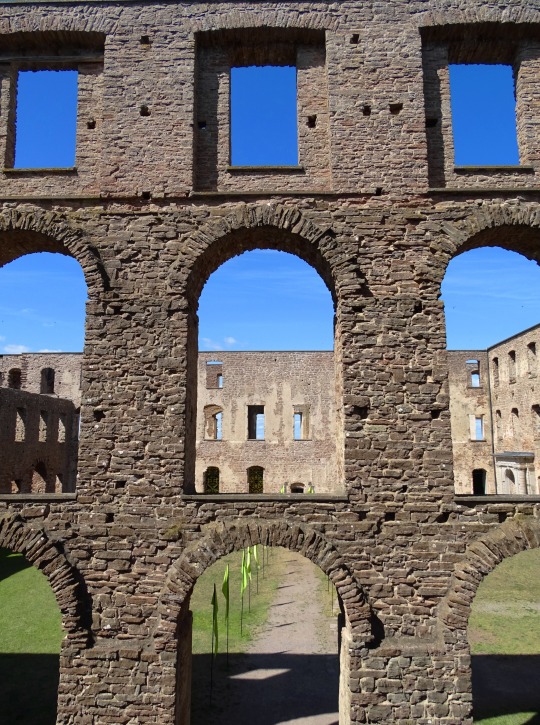
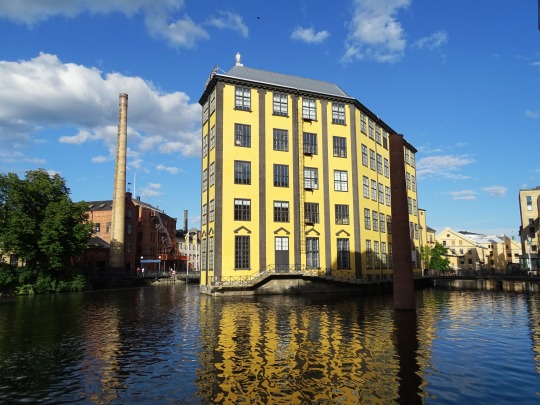
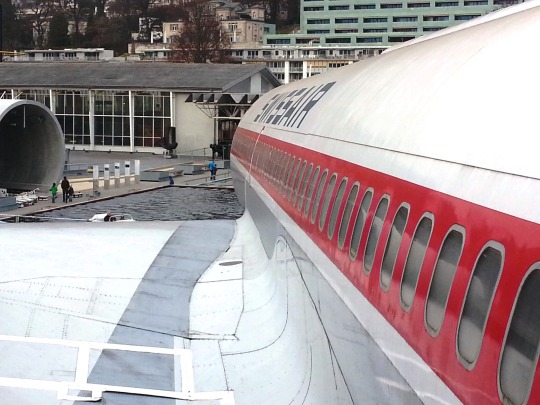

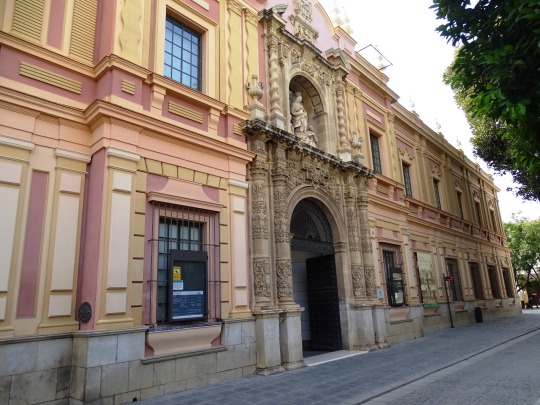
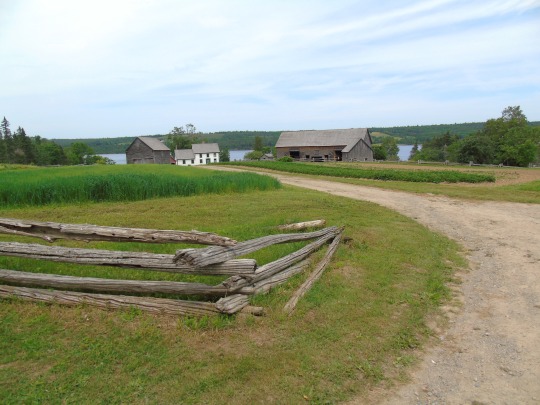

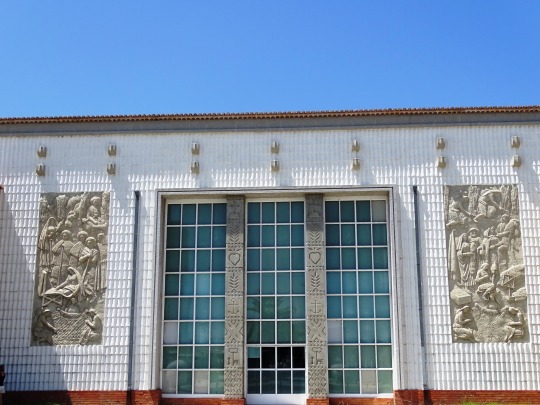
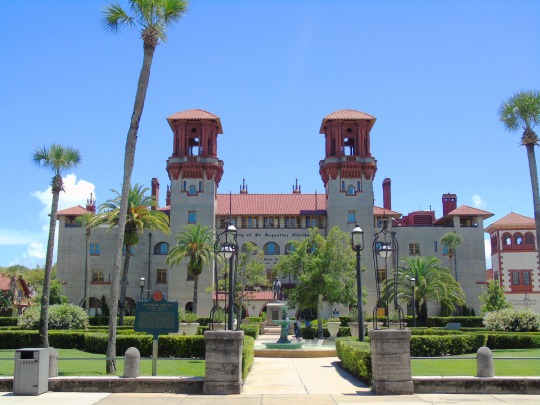

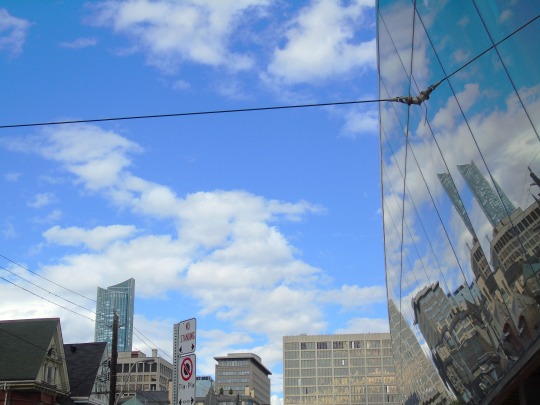
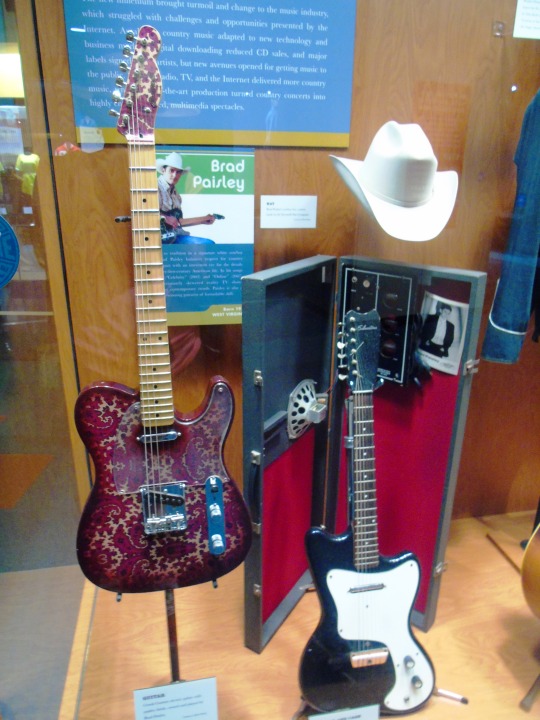
International Museum Day
According to the International Council of Museums (ICOM), a museum is "a non-profit, permanent institution in the service of society and its development, open to the public, which acquires, conserves, researches, communicates and exhibits the tangible and intangible heritage of humanity and its environment for the purposes of education, study and enjoyment." International Museum Day, founded and organized by the ICOM, aims to raise awareness that "museums are an important means of cultural exchange, enrichment of cultures and development of mutual understanding, cooperation and peace among peoples."
International Museum Day got its start in 1977 when a resolution was adopted at the ICOM General Assembly in Moscow to create an annual event "with the aim of further unifying the creative aspirations and efforts of museums and drawing the attention of the world public to their activity." The number of museums participating in the day has increased in the decades since. Since 1992, there has been a unique theme each year that is devoted to an issue that deals with the role of museums in the development of society and is at the forefront of the global museum community. There has been an official poster for the day since 1997, and in 2011 online resources were expanded.
Participating museums plan events and activities related to the year's theme, engage with the public, and "highlight the importance of museums as institutions that serve society and its development." All museums around the world can take part, with equal access to museums for everyone being a value of the day. Events may last the day, for a weekend, or for the whole week.
How to Observe International Museum Day
Observe the day by visiting a museum! Check the International Museum Day interactive map for official events near you and the International Museum Day Facebook page for up-to-date information about the day. If you are associated with a museum, organize free events that promote the role of museums in society and are related to the year's theme. Posters, information about the theme, and a communications kit can be found on the day's official webpage. You could hold your event today, on the weekend, or throughout the whole week. Make sure to list your event on the day's interactive map.
Source
#MacBride Museum of Yukon History#N.A.R. Station Museum#Pony Express Station & Museum#National September 11 Memorial & Museum#International Museum Day#ICOM#InternationalMuseumDay#18 May#New York City#USA#travel#vacation#original photography#Trelleborgen#Bohus Fortress#Falun Mine#Borgholm Castle#Verkehrshaus der Schweiz#Swiss Transport Museum#Fort York National Historic Site of Canada#Switzerland#Work Museum#Kings Landing Historical Settlement#National Corvette Museum#tourist attraction#cityscape#architecture
12 notes
·
View notes